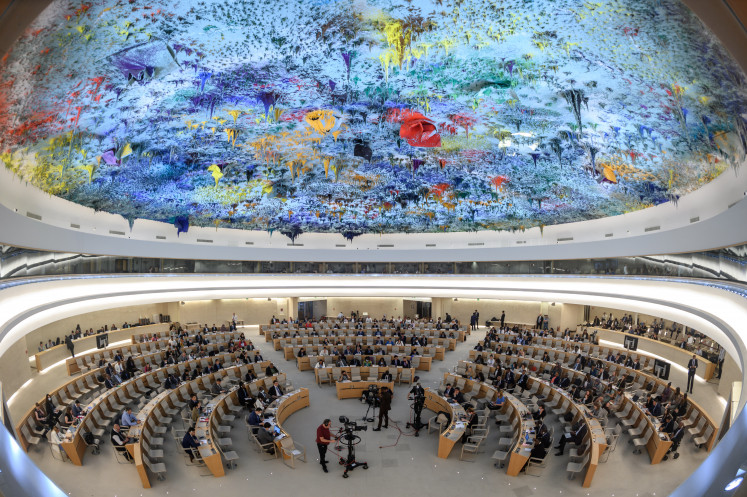Popular Reads
Top Results
Can't find what you're looking for?
View all search resultsPopular Reads
Top Results
Can't find what you're looking for?
View all search resultsBooming population spawns urbanization problems: UN
As the world is rapidly urbanized, promoting sustainable urban development is essential to ensure that people living in urban cities can have their basic human needs fulfilled, experts say
Change text size
Gift Premium Articles
to Anyone
A
s the world is rapidly urbanized, promoting sustainable urban development is essential to ensure that people living in urban cities can have their basic human needs fulfilled, experts say.
United Nations Population Fund (UNFPA) Representative in Indonesia Jose Ferraris said on Wednesday that as the world’s population was approaching 7 billion, more people were presently living in cities.
Wherefore, improving the quality of life of people living in urban areas, some of whom were living in informal settlements and slums, would be an unavoidable need.
“This is really a big challenge,” said Ferraris at the launch of The State of World Population (SWOP) 2011, an annual population report released by the UNFPA. The report launch aimed to commemorate a global milestone billed as “The World at 7 Billion”, which will fall on Oct. 31.
A 2010 UNFPA data shows that about 43 percent of Indonesians live in urban areas. It is projected that by 2020, two out of three Indonesians will live in cities.
“We should not forget that people who are already living in those communities need to play their important role. So, they have to be empowered, ensuring that they can play active roles in improving the living condition of communities where they currently live in,” Ferraris said.
Tommy Firman, an urban planning specialist, said that big cities such as Jakarta, Surabaya and Bandung, might descend into chaos unless their local governments built adequate sustainable urban development programs.
With ongoing rapid urbanization, he said, more people were living in congested areas with a lack of services to meet their basic needs, such as jobs and housing as well as education and health services.
“About 50 percent of people in developing countries live in urban areas,” said Tommy, a professor of architecture, planning and policy development at the Bandung Institute of Technology (ITB).
The 2010 Population Census conducted by the Central Statistic Agency (BPS) showed that the urbanization level in Indonesia had reached 49 percent.
The 2009 Population Reference Bureau showed that the urbanization level was at 43 percent in 2009, up from 42 percent in 2000. It had increased steadily from 22.3 percent to 30.9 percent during the period of 1980-1990, far higher than 5.8 percent in 1920.
The urban population of Java accounts for 70 percent of the total urban population of the country.
Of Indonesia’s total urban population, more than 21.2 percent, or one fifth, live in Greater Jakarta, which is the nation’s economic and industrial center.
Firman said that rural urban migration in the Jakarta Special Province (DKI) was fed from its surrounding areas, such as Bogor, Depok, Tangerang and Bekasi. No studies give an exact number of commuters in the nation’s big cities, including Jakarta.
However, according to a study by Japan International Cooperation Agency (JICA), about 1.5 million people commute to downtown Jakarta from the suburbs every day.
“That means that although Jakarta is home to 9.5 million inhabitants as revealed by the 2010 population census, the number of people in the city can reach 11 million in the daytime,” Firman said.
With such a large number of daily migrants, he said, the Jakarta administration should bear the burden of basic social services well beyond its initial responsibilities.
“It will lead to a question of whether the local government has the capacity to deliver basic human needs for both Jakarta residents and non-residents,” he added.
Urbanization is one of the issues explored in the 2011 SWOP report, including problems related to sexual and reproductive health and rights, gender equality, sustainable development and welfare for the elderly.
The world population has doubled since the late 1960s and is still growing, the agency says. A similar trend can also be observed in Indonesia. In 1971, the country’s population reached 137 million, and it is projected that by 2025, Indonesia’s population will have reached 273 million. Of the world’s 7 billion people, the largest population bracket will be people aged between 10 and 24 years.










